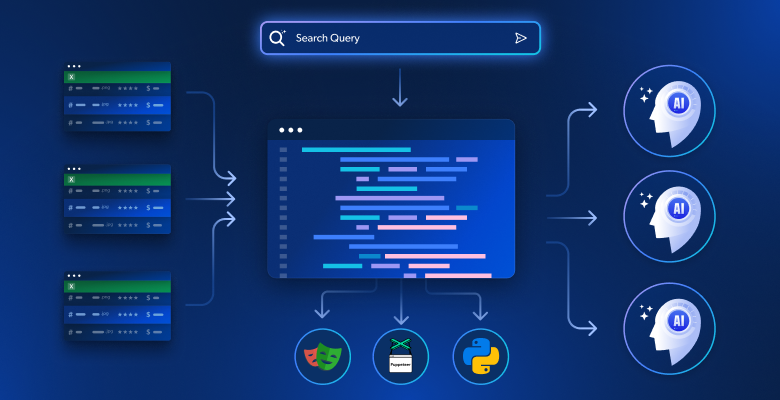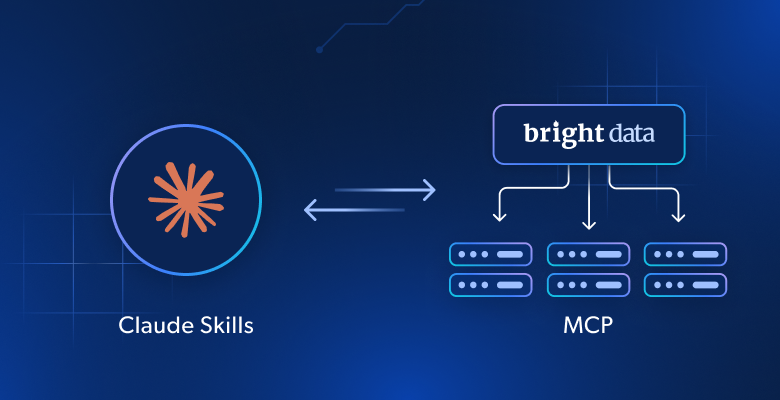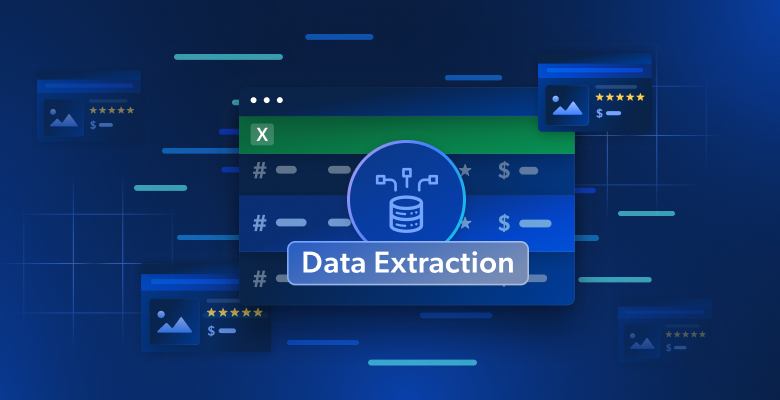In this article we will discuss:
- What is a Dataset?
- These are the top-three most popular Datasets
- What are the advantages of pre-collected datasets?
- Choosing an option tailored to your needs
What is a Dataset?
Datasets are essentially files that include collected records of information (data fields) which cover specific topics and are designed to answer related business questions or use cases. These files can be analyzed directly or serve as an input into programs or algorithms to achieve tailored output or analysis.
For example, an online fashion marketplace may want to optimize its product offering to match industry trends and customer preferences, and as such are looking to collect the following information:
- Best selling products of leading online retailers in each of the relevant product categories
- Sales volume or inventory levels for key competing products
- Identifying successful sellers and stores in leading marketplaces so that they may be onboarded
- Analyzing reviews to track changing preferences
Datasets can be catalogued so that they can be found and utilized without necessarily displaying their source website. Each dataset typically consists of millions of multiple ‘data records’, each with its own relevant data fields, all relating to one specific segment. For example, the social media presence of key influencers on various platforms. ‘Data fields’ refers to a specific category of the data appearing within a given record, for example the account name, number of followers or the average engagement rate for each post.
The ways in which these datasets are organized, and accessed differ. Here are some of the most common methods:
- Complete datasets: These cover entire domains and include all the data records, for example all the companies in a certain industry segment.
- Smart Subsets: In this case scenario, various filters are applied to complete datasets in an attempt to answer a specific business question. For example, a Venture Capital firm may be looking for early stage companies by looking for people who have founded companies over the course of the last 3 years, have a strong technological background, with a company size in the 5-25 range who have yet to surpass $2M in various funding rounds.
- Differential datasets: These are datasets that are constantly being collected, and recollected from data sources in order to identify changes and focus efforts exclusively on the ‘diff’ – i.e. parameters that have changed since the previous crawl. Some good examples include price, and job posting changes or any new records recently added
- Merged / enriched datasts: This is when two or more data sources are merged into one dataset, for example, cross referencing datasets from different digital marketplaces.
These are the top-three most popular Datasets
Bright Data has recently introduced its new, Datasets solution, which enables you to gain access, within a matter of minutes, to pre-collected data points spanning entire websites. The main advantage of this option is that it is quicker, and more cost-effective than customized, active data collection options. It also requires zero technical know-how, no DevOps team on staff, nor any in-house data collection infrastructure. Also, datasets include additional fields which enriches the data that was originally collected, adding value when compared with raw data collection.
In the context of rolling out this product, we identified three types of datasets which are most popular, these include:
- eCommerce websites: Companies in the digital retail space are currently most interested in buying complete datasets from popular marketplaces which help them map all the competing products, and vendors in their niche. They are also very interested in pre-collected datasets showing consumer reviews of those products, and vendors.
- Social media networks: Companies are increasingly looking to gain access to industry-specific influencers, and micro-influencers, as well as engagement data (such as views, likes, and shares of specific content). Keep in mind that ‘smart filtering’ of influencers can be based on type, location, topics, number of followers as well as other parameters.
- Business and people datal websites: Companies in the finance, investments, and HR sector are interested in getting extensive information on companies, from various directories and websites, as well as data on employees. Each type of company may want to slice and dice the data differently to gain their own individual insights and answers.
What are the advantages of pre-collected datasets?
Let’s take a minute to break it down, and look at what the operational, and budgetary advantages are of using pre-collected datasets:
- From an operational perspective, there is no in-house infrastructure that you need to build or maintain. You do not need to have technical staff exclusively dedicated to data collection and cleaning either. New data retrieval, and input can be achieved extremely quickly (within minutes). And most importantly, datasets are already structured and ready-to-use in your preferred method of storage (parsed JSON, CSV, or Excel).
- From a budgetary point of view, since datasets are pre-collected, they are a much more cost-efficient option than actively collecting or outsourcing data collection jobs. Beyond this they afford you high levels of budgetary control, and flexibility. So for example, if you have a new project, client, or have an idea that your team wants to build a Proof of Concept (PoC) proposal for, your ability to scale (up/down) and diversify your data input is limitless.
- From a data point of view, Datasets offer more value and more data, either through the data validation and enrichment process. This is augmented by utilizing ‘smart filtering’ that allows companies to answer specific queries that are still reliant on having a data domain in its entirety as a baseline. Also, Datasets are also built based on an extensive ‘discovery stage’ of all relevant pages on a target domain, which is a crucial capability in many cases.
Choosing an option tailored to your needs
Once you have decided that using Datasets is the right option for your company, you can choose from one of three options:
Option one: Get an enriched snapshot of an entire website
Here you are able to focus on a specific website and gain access to millions of pages that you can input into your systems. As the snapshot was built as part of a full discovery process, it will include all relevant pages. For example, if your company is looking to identify successful eCommerce vendors or stores, you can gain access to datasets of all sellers on a per- marketplace-basis and input that information into your systems. What is nice about this is that it comes with an optional refresh of datasets at a later date so that you can keep your tools relevant.
Option two: Get a targeted data subset
This option allows you to be targeted with your data collection which can help you save time, and money especially if you know exactly what you need. You can do this by defining the filters and parameters that are most relevant to you. For example, if you are a hedge fund looking for a specific industry segment, you may want a dataset subset pertaining to jobs, posts, companies, and people.
Option three: Get a completely tailored dataset
If you have a very specific dataset or combination of data points that you would like to gain access to, and the previous two options do not provide you with the information you need, you can contact us directly and we can build a dataset tailored to your needs. For example, if you want to find certain types of physicians in Australia, recent court rulings in Texas or all the possible configurations on a made-to-order truck, we can build this dataset for you.
The bottom line
Whatever your company’s specific data needs entail, gaining access to datasets without actually having to perform any data collection has its advantages. From helping you forgo building in-house infrastructure, and freeing up technical staff to focusing on product development, and enabling you to provide new customers with tailored solutions in an instant. Datasets can help drive operational efficiency while providing you with a competitive edge in your industry.






